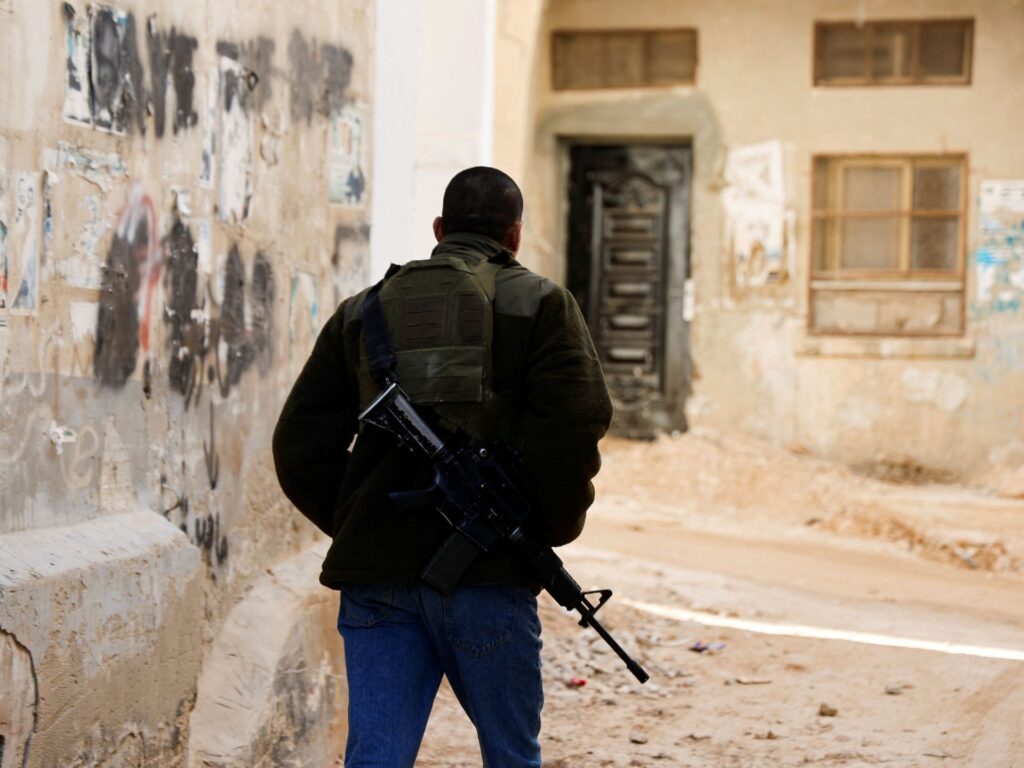Yedioth Ahronoth newspaper said that the Israeli occupation army is facing in the occupied West Bank what it calls a flood of weapons, noting that in the face of this, the regular infantry brigades from Gaza will return to the West Bank to replace the reserve brigades for the first time since the flood of Al-Aqsa.
The report published by Yoav Zaitoun – the newspaper’s most prominent military analyst – quoted the Israeli army’s central command as waging a “campaign against weapons,” claiming that more than 1,100 different rifles were seized in all locations in the West Bank during the past year.
Although the report acknowledged that the operation carried out by the Palestinian resistance near the Kedumim settlement in the northern West Bank – which led to the killing of 3 Israelis last Monday – was carried out with ordinary weapons, it confirmed that it relied on a larger infrastructure in the West Bank.
According to the intelligence assessment on which the report was based, most weapons are smuggled from Jordan, and that one-sixth of Palestinian homes in the West Bank have some type of weapon, ranging from a pistol to a regular rifle to a Kalashnikov or M-16, although he indicated that some of these weapons It is for self defense only.
“Our breath is long and our hands are longer.” The Al-Qassam Brigades and Al-Aqsa Brigades in Jenin camp in a statement: The Palestinian Authority crossed the red lines and killed innocent people intentionally and systematically, and we will not stand idly by, and so far you have seen only a few of our strength and weapons.#Gaza_War #News pic.twitter.com/8Fq4dtucyk
– Tel Aviv Tribune Channel (@AJArabic) January 6, 2025
Price jump
In information that is not consistent with the occupation army’s report on the large proliferation of weapons in the West Bank, the military analyst indicated that the prices of these weapons jumped last year from 30,000 shekels (about 8,000 dollars) for a regular long rifle to 60,000 shekels (16,000 dollars) for a rifle. Automation.
He also pointed out the difficulty faced by the occupation while continuing to consider the West Bank a secondary arena, even though it “does not stop military activity for a single moment in the heart of the Palestinian territories, with assassinations in broad daylight, including assassinations by marches in Tulkarm, Jenin, the Jordan Valley, and Nablus, on a weekly basis.” almost”.
Regarding this activity, Zaitoun said that the Israeli army maintains about 20 battalions in the West Bank, which is less than its peak presence during the periods of resistance in the two years preceding the October 7 War.
He pointed out that most of these battalions are still reserve battalions or units that are not regular infantry or armored units, such as the Home Front Command battalions or the mixed permanent battalions in the Jordan Valley and the Qalqiliya sector.
The military analyst revealed to the newspaper that next month, regular infantry brigades are expected to arrive in the West Bank, for the first time since the October 7 attack.
He said, “The Nahal Brigade brigades will be deployed in places such as Hebron and Nablus, and regular fighters from the artillery brigades will gradually return to combat missions in the West Bank, after their batteries are gradually withdrawn from other theaters.”
He added, “The escalation in the West Bank increases the need for large-scale reinforcements and the diversion of resources and attention from Gaza, Lebanon, and Syria, despite them remaining as major arenas as determined by the General Staff of the Israeli Army.”
Escalation and use of settlers
Although the report indicated that the occupation forces do not intend to close the common roads between Palestinians and Israelis in the West Bank, which are used by hundreds of thousands of Palestinians daily, it pointed to the escalation in the procedures of the Israeli army, such that soldiers became more lenient in shooting at Palestinians, such as carrying out hundreds of attacks. From combat aircraft, especially from drones during the past year and a half.
He also points out what he called the major dilemma related to how to deal with cases in which resistance fighters organize armed marches in the streets of Palestinian cities in broad daylight, and only 20 minutes away from the territories occupied in 1948.
But he admits that the occupation forces decided to storm the areas where these marches were organized despite the high possibility of exposing Palestinian civilians to danger, as happened many times, in addition to the exposure of these forces and their confrontation by the resistance fighters.
Zaytoun confirms that the occupation army officially encourages the settlers to carry weapons, and says, “Within the framework of the “Settlement as a Fortress” program, more than 7,000 weapons were distributed to the settlers, including members of the reinforced and permanent preparedness teams.”
The military analyst concluded his report by emphasizing that Israeli tanks will not return to Ramallah or Jenin anytime soon, as happened in the Defensive Shield campaign in 2002, because Israel is still counting on the role of the Palestinian Authority’s security services in controlling weapons and confronting fighters.


